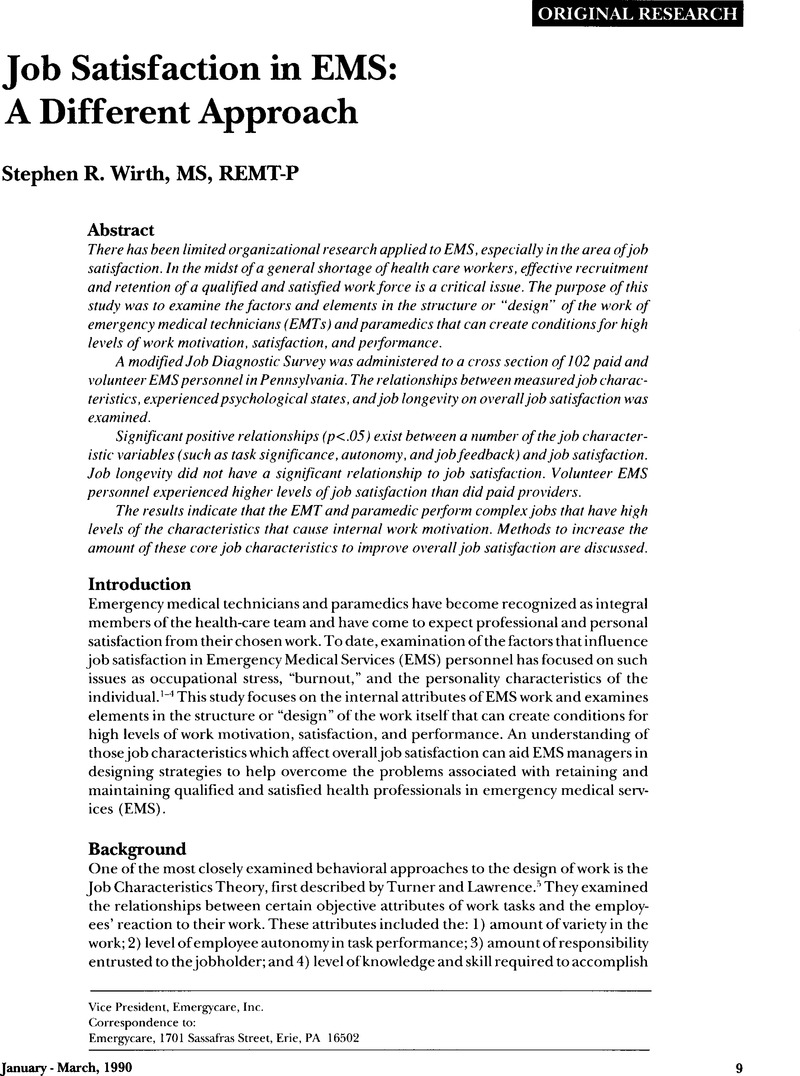No CrossRef data available.
Article contents
Editorial Comment
Published online by Cambridge University Press: 17 February 2017
Abstract
An abstract is not available for this content so a preview has been provided. Please use the Get access link above for information on how to access this content.

- Type
- Article Commentary
- Information
- Copyright
- Copyright © World Association for Disaster and Emergency Medicine 1990
References
1. Kaluzny, AD, Veney, JE: Health services organizations. Berkley, Ca.:McCutchan Publishing Corp., 1980.Google Scholar
2. Allison, EJ, Whitley, T, Revicki, D, Landis, S: Specific occupational satisfaction and stresses that differentiate paid and volunteer EMTs. Ann Emerg Med 1987; 16:676–679.CrossRefGoogle ScholarPubMed
3. Smith, PC, Kendall, I.M, Hulin, CL: The Measurement of Satisfaction in Work and Retirement. Chicago: Rand McNally & Co., 1969.Google Scholar
4. Hammer, J, Mathews, J, Lyons, J, et al: Occupational stress within the paramedic profession: An initial report of stress levels compared to hospital employees. Ann Emerg Med 1986; 15:536–539.CrossRefGoogle ScholarPubMed
5. Brook, RC: Health services research: Is it good for you and me? Acad Med 1989; 64:124–130.CrossRefGoogle Scholar


